How to grow mushrooms: our expert guide to making fabulous fungi
Find out how to grow mushrooms and enjoy months of oysters, buttons and shiitakes with our home-growing tips

Laura Crombie
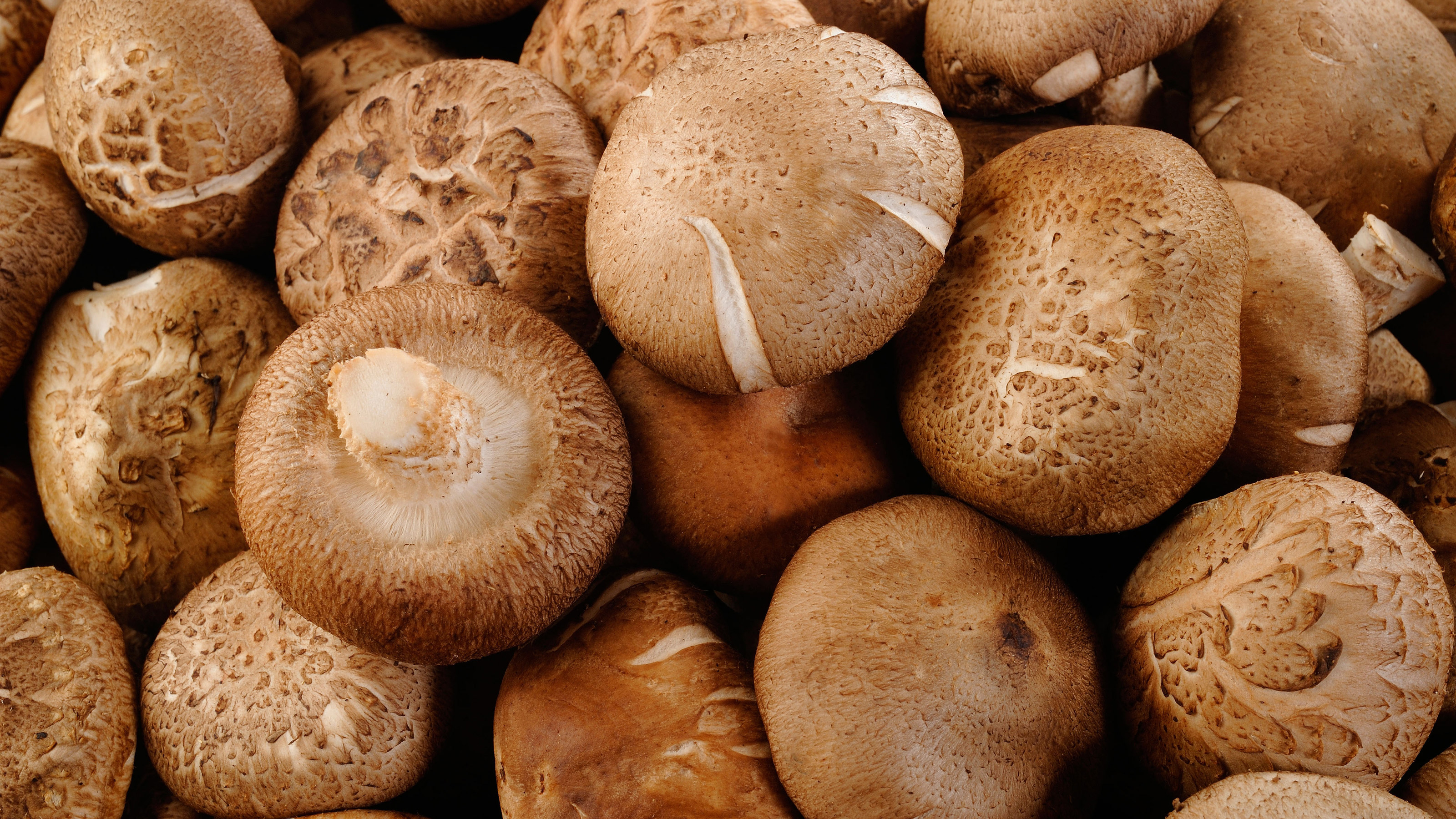
Knowing how to grow mushrooms expands your growing horizons and presents you with a chance to make something that is fun, nutritious, creative and just a little bit otherworldly. Unlike other plants, there are no seeds or bulbs involved – and unlike fruits, no pollination techniques, training or pruning skills to master. It lifts the lid on a wealth of variety in shape, color and texture. For anyone used to shop-bought mushrooms, it’s a revelation to sample your own shiitake, chestnuts and oysters, as well as exotic types such as lion’s mane and chicken-of-the-woods.
Growing mushrooms is a constantly experimental process, but once you have tried it a couple of times you will find it is remarkably easy and enjoyable. Whether you use kits, logs or straw, or get even more creative with the likes of paperback books, you’ll find it’s a bit like having your own little science project. Even the things that don’t go completely to plan can be mind-blowing and educational. Cultivating your own edible mushrooms is also a great source of protein, vitamins and minerals.
What’s more, the edibles you grow will be completely safe. For anyone who has walked through the woods and been enchanted by wild mushrooms, but been unsure of which to forage, this guide will open your eyes to some reassuringly delicious possibilities.
So if you’re looking to add some novelty to your nourishment and fancy a few playful kitchen garden ideas, look no further. All you need is shade, moisture and a little time, and pretty soon you’ll be a dab-hand at producing some extraordinary culinary creations.
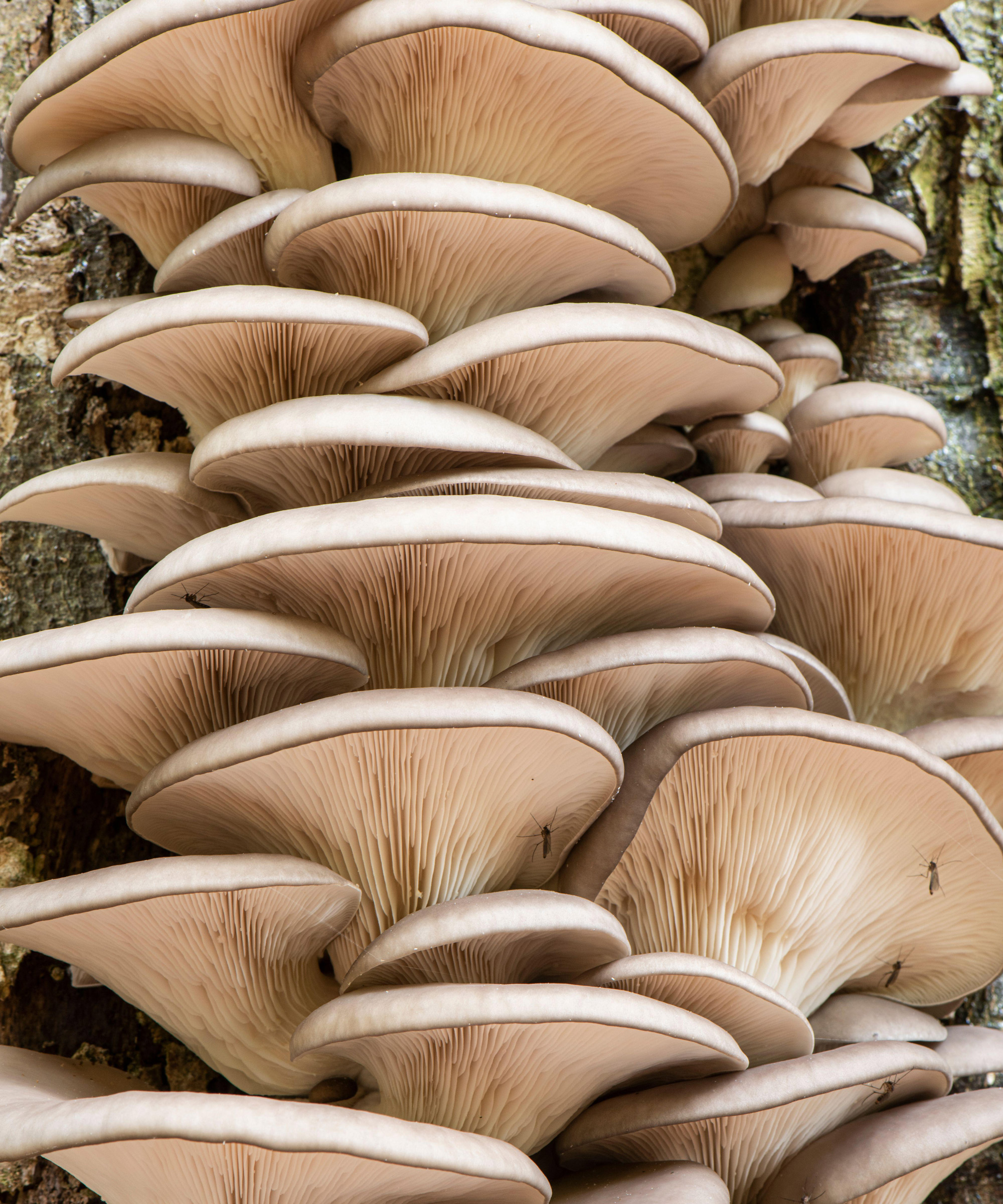
Getting started with how to grow mushrooms
If you fancy a shiitake, an oyster or a chicken of the woods, there’s an edible mushroom here for you, whether you've got a generous plot or just a spare room. In most cases, growing mushrooms at home only requires a dark, damp place (and mostly cool, although there are exceptions). So you can grow both outside and inside, and you don’t need loads of space.
The language of mushrooms involves words like ‘spores’ and ‘spawn’. Think of mushroom spawn as seedlings, and the spores as seeds. When learning how to grow mushrooms, you just need some spores or spawn. For beginners looking to make things as simple as possible, you can buy mushroom-growing kits, available on Amazon, which take the hassle out of the process (indeed, many contain the spawn). As Amateur Gardening’s fruit and veg expert Lucy Chamberlain points out, these kits can free up your imagination and your growing space (however big or small it might be).
‘For those with a large garden, you could fill a shady, damp corner with hardwood logs impregnated with shiitake spawn (or Indian oyster and coral fungi, if you have softwood logs),’ says Lucy. Moist chip-mulched garden borders and compost heaps offer ideal growing conditions for the likes of shaggy ink caps and King Stropharia fungi. ‘Others with no plot can grow oyster mushrooms on a loo roll or dog-eared paperback!’
Each type of mushroom is grown in a different medium, and these materials or foodstuffs are called ‘substrates’. Substrates can be logs, sawdust or straw, compost, coffee grounds or paperbacks. Just check the best conditions for the variety you’re growing before you start to ensure a healthy, fruitful feast of fungi.
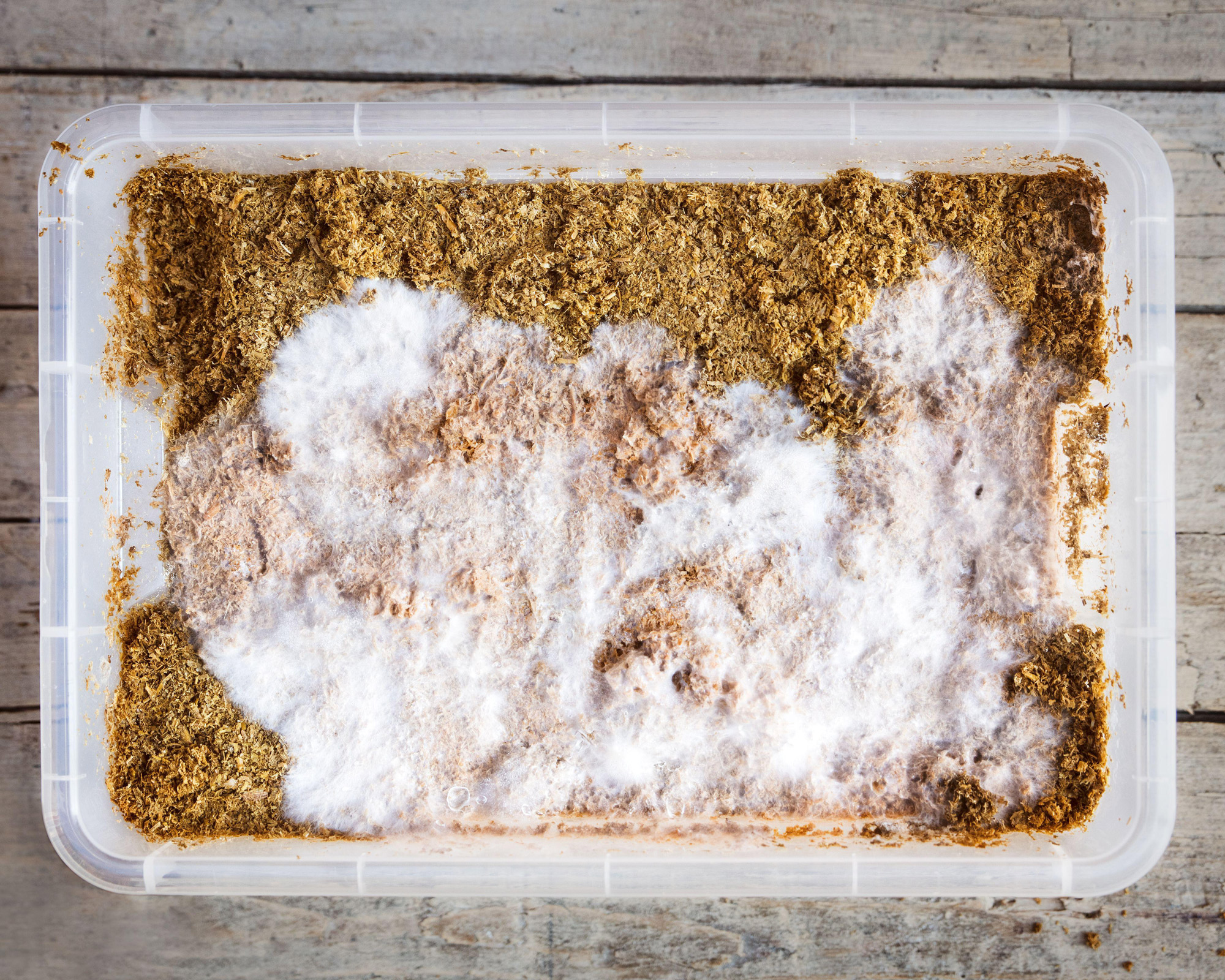
When and where to grow mushrooms
Growing mushrooms is a project that is best carried out during the damper, duller days of mid to late fall. The moist soil and fresher temperatures are well suited to many of the more readily available mushroom growing options. For those with a bit of space in a raised garden bed (possibly protected by a polytunnel or mesh) or the chance to fill some diy cold frames outdoors, fall is the time to be trying your hand at homegrown edible fungi. However, the advent of growing kits means you are free to try growing at other times of year indoors.
As long as you can recreate the conditions preferred by your fungi of choice, it is possible to grow mushrooms in a spare room or basement, a garage or a shed. This is great news for people searching for especially small vegetable garden ideas or those who are genuinely struggling for growing space in a conventional garden. Because light isn’t an issue, the possibilities are fascinating – with some growing options including buckets, bags and jars. Of course, mushrooms are a fantastic project for those looking for things to plant in a greenhouse over the autumn months, too – as long as you keep things on the shady side.
As Chris Bonnett of GardeningExpress.co.uk explains, the environment you choose just has to be dark and damp. ‘To grow mushrooms indoors, find a spot away from sunlight,’ says Chris. ‘Depending on mushroom variety, pick a place with an even temperature of around 59˚F (15˚C),’ he adds. ‘Outdoors, good places to grow mushrooms include garden beds or hardwood logs that are out of the sun.’
As long as your mushroom choice suits a particular growing substrate, you’re fine. Portobello and button mushrooms are happiest in compost. Shiitake are happy in logs and straw, while oysters can also be grown in coffee grounds.
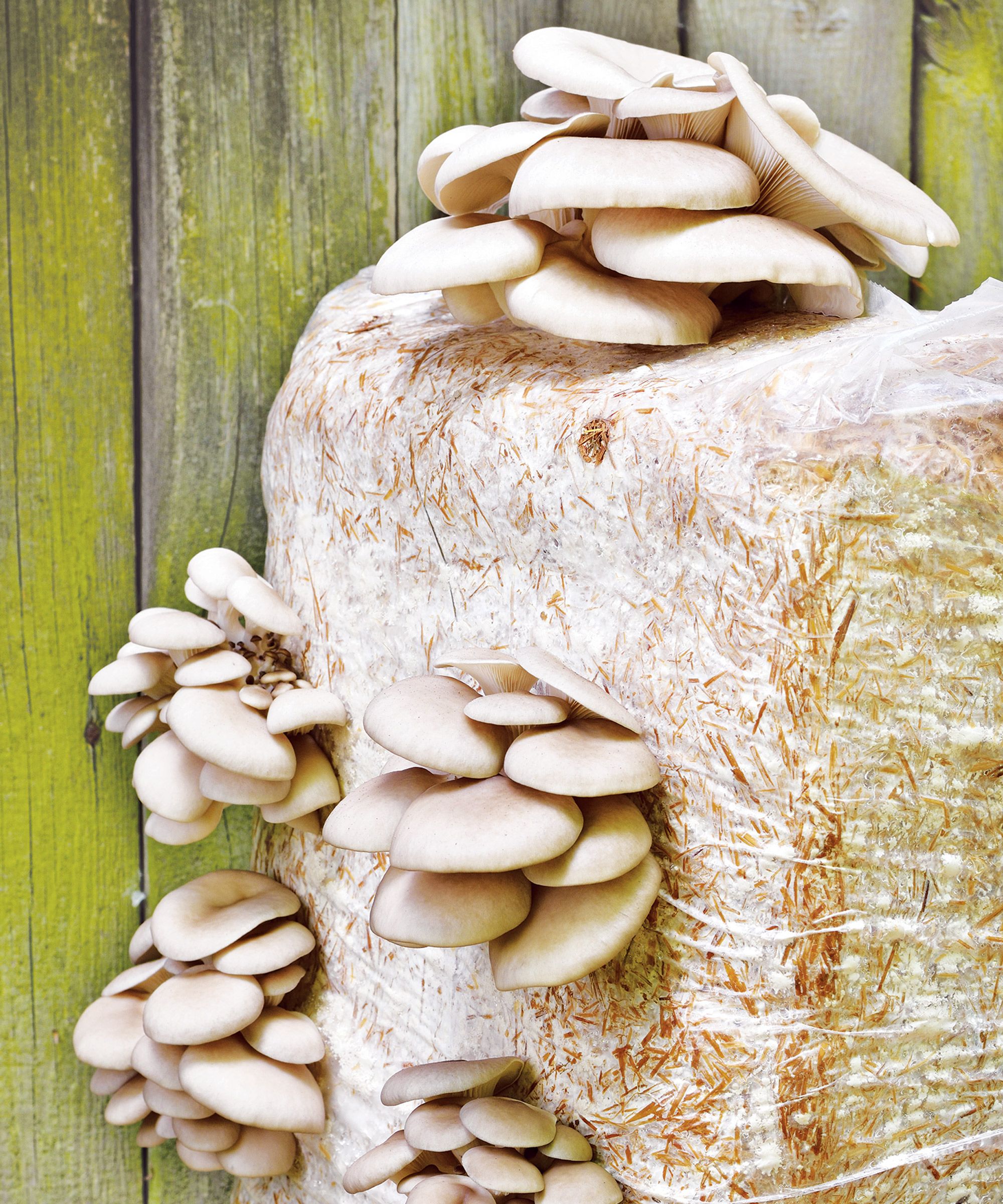
Simple methods for growing mushrooms indoors and out
If you want to try growing mushrooms indoors without a kit, prepare a mushroom bed or box, 12in (25cm) deep. Pack with moist compost and scatter mushroom spawn across the surface. Mix to 3in (8cm) deep and cover with damp newspaper. After three weeks, you should see lots of white threads (known as mycelia – this is where the mushrooms grow). Remove the paper and cover with soil and a few handfuls of lime. Then just keep moist using a mister.
For outdoors projects, depending on variety, mushrooms appreciate soil rich in organic matter. Prepare the space by cutting out a lawn square 12in (25cm) across and 2in (5cm) deep. Loosen the soil with a fork. Spread mushroom spawn on the surface and rake to half an inch (1cm) deep. Replace the turf square and keep the soil moist.
However, if you want to know how to grow mushrooms using kits, logs, paper or straw, there are some specific guidelines to follow. Follow these tips to help you with your projects:
- Growing mushrooms with special kits Chris Bonnett recommends this option for beginners. ‘The growing kits require minimal effort, because they include already inoculated substrate and spawn, and all you have to do is spray the mushrooms with water each day.’ Make sure the kit is properly exposed to fresh air as well as humidity. Many kits now use spent coffee grounds as an alternative substrate to compost. For instance, oysters are often grown this way.
- Growing mushrooms with logs You can grow mushrooms on freshly chopped logs for six years. Shiitake is a popular choice. Use plugs or ‘dowels’ which are impregnated with mushroom spawn ready to plant into a log. Hardwood is best. Drill holes every 6in (15cm) along the log. Insert dowels and seal holes with wax. Place in a damp, shady spot. Soaking logs can help boost harvests. Once you see mushroom activity, move the log to a warm, moist spot.
- Growing mushrooms with paper and straw Oyster mushrooms are a great entry-level choice for this option. Soak the straw or paper overnight, then drain and mix with a pack of mushroom spawn. Alternatively, if the substrate is inoculated, soak it in water and then place in a bag or bin liner. Leave in a damp, shady spot and wait for the mycelia to grow. Move to a warm place and remove the bag and mist, or cut slits in the bag so the fungi can grow through.
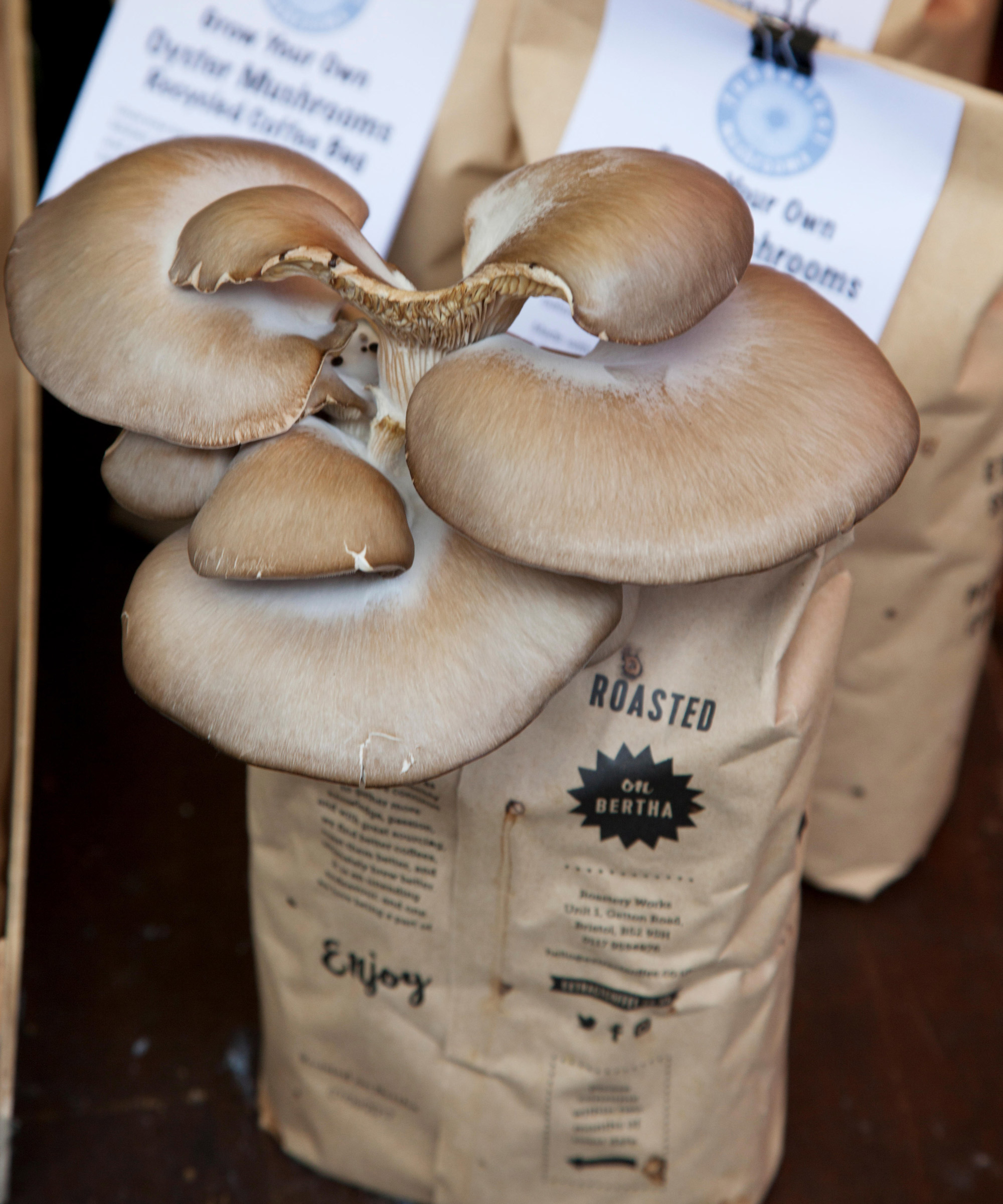
Mushroom care tips
Once you have picked the best substrate, and created the correct growing environment (by manufacturing a fruit chamber indoors or setting the scene outside), then knowing how to grow mushrooms is generally quite simple.
As Lucy Chamberlain points out, adequate and constant moisture is key. For many crops, watering plants is about keeping the compost moist – but for mushrooms, it’s primarily about making sure humidity levels are just right. Misting and spraying the walls of your growing space on a regular basis is crucial.
If you decide not to use a kit, then depending on the mushroom you choose to grow, you may also need to timetable a temperature drop in order to kickstart the fruiting stage of the process.
‘Many mushrooms also benefit from a chilling period in order to switch from producing the white, fuzzy mycelium that penetrates the woody tissues to the fruiting bodies that grace our frying pan,’ says Lucy. ‘Some suppliers send out kits where mycelial growth has already been induced, leading to quicker results, whereas others ask you to inoculate the substrate on delivery.’
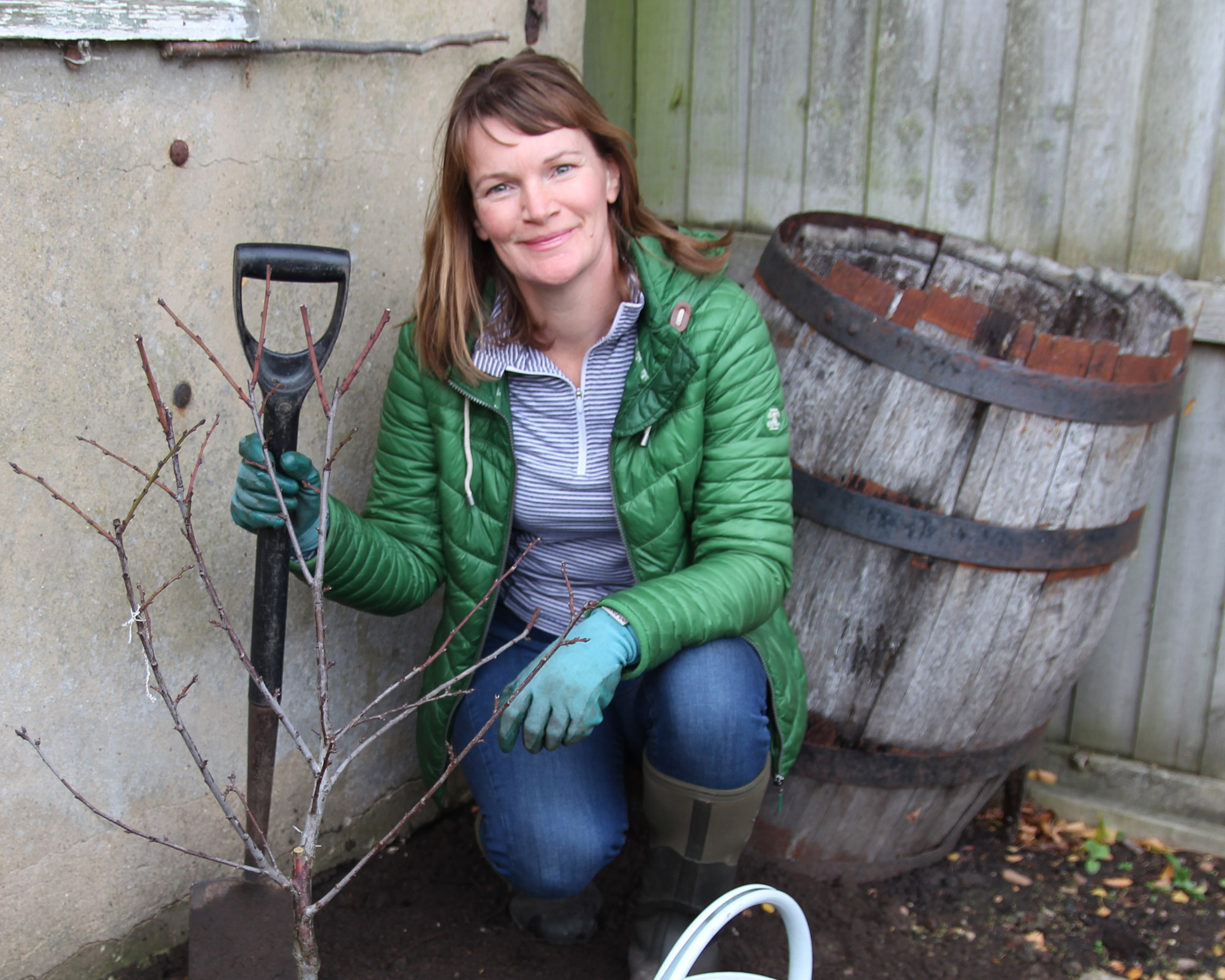
Lucy was a Horticultural Advisor at RHS Wisley for six years. She has been Head Gardener on a 100-acre private Essex estate for the past seven years, and writes regularly for titles such as The Garden, Gardeners’ World and The Guardian. She's the author of the RHS Step by Step Veg Patch book, as well as the fruit and vegetable growing expert for Amateur Gardening magazine.
Here, she offers her top tips on how you can enjoy better success with your mushroom growing projects.
- If you are using logs, you should avoid spring-cut wood or logs with no bark. Different tree species vary in their success; however, oak and birch tend to be popular with these projects and give great results.
- Most often, mushroom growing kits will supply inoculated substrate, but some offer liquid cultures injected via a needle and syringe. Check any instructions carefully to make sure you start your project right.
- Ensure that all substrates are initially sterile and kept as clean as possible; most kits take care of this for you. Boiling water may be used to maintain cleanliness, but check any packaging instructions carefully.
- Less-common fungi like lion’s mane, chicken of the woods, stropharia and morels can be grown with kits, but require a little more time; be prepared to practise if things don’t go your way the first time.
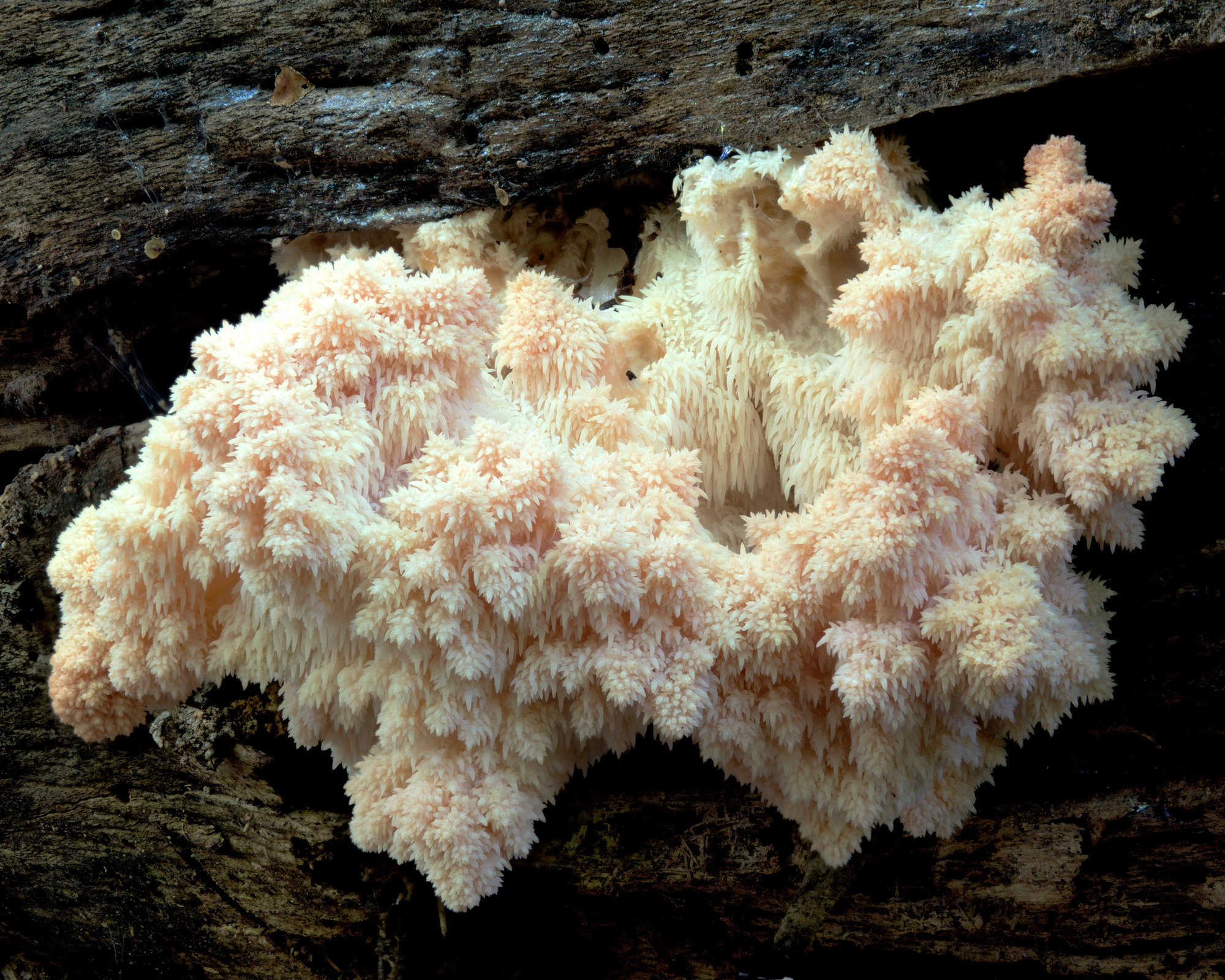
Problems growing mushrooms and how to solve them
Growing mushrooms is very much about embracing an element of trial and error, even more so than with plant-based veggies and seed-derived fruits. So take heart if you encounter setbacks; it’s very rarely beyond hope. Sometimes it’s just about checking the basics of nourishment, moisture and temperature, while being mindful of the choice of materials (substrates) you have elected to use.
As the Mushroom Appreciation collective points out, the important thing about growing your own edible fungi is to keep trying. But here are a few things to think about:
- Incorrect moisture levels: Humidity is key to success. Indoors, maintain a constant level of moisture with misting and spraying of walls. For those wanting to use a greenhouse, a simple humidifier can automate the process and ensure best fruiting. Or you can make your own DIY mini greenhouses to intensify conditions in smaller spaces. Just be sure not to let your project sit in water as this can lead to rots or molds.
- Lack of air flow: Fanning is also important, as fresh and regular air flow is needed to give your growing fungi the oxygen it needs. Otherwise, homegrown fungi can get long and leggy. Keep on top of this with regular fanning and ventilate well, all the while ensuring that temperatures are observed that are best suited to your shrooms.
- Growing in the wrong environment: Make sure your mushroom variety is happy with the substrate and environment you have. Small spaces are not a problem as long as you are growing the right variety in the right way. Oysters, for example, like warm temperatures, so won’t appreciate being left outdoors in winter chills. Similarly, compost-lovers like portobellos won’t take kindly to logs. Also, keep your eyes out for flies if you use warm, moist growing conditions. Be sure to invest in insect repellent.
And remember, give your project time. Patience is key, as is getting a sense of the development time of your particular mushroom type, as these vary. Oysters can be quick off the blocks, but this is not true for all types, so remember: all good things come to those who wait.
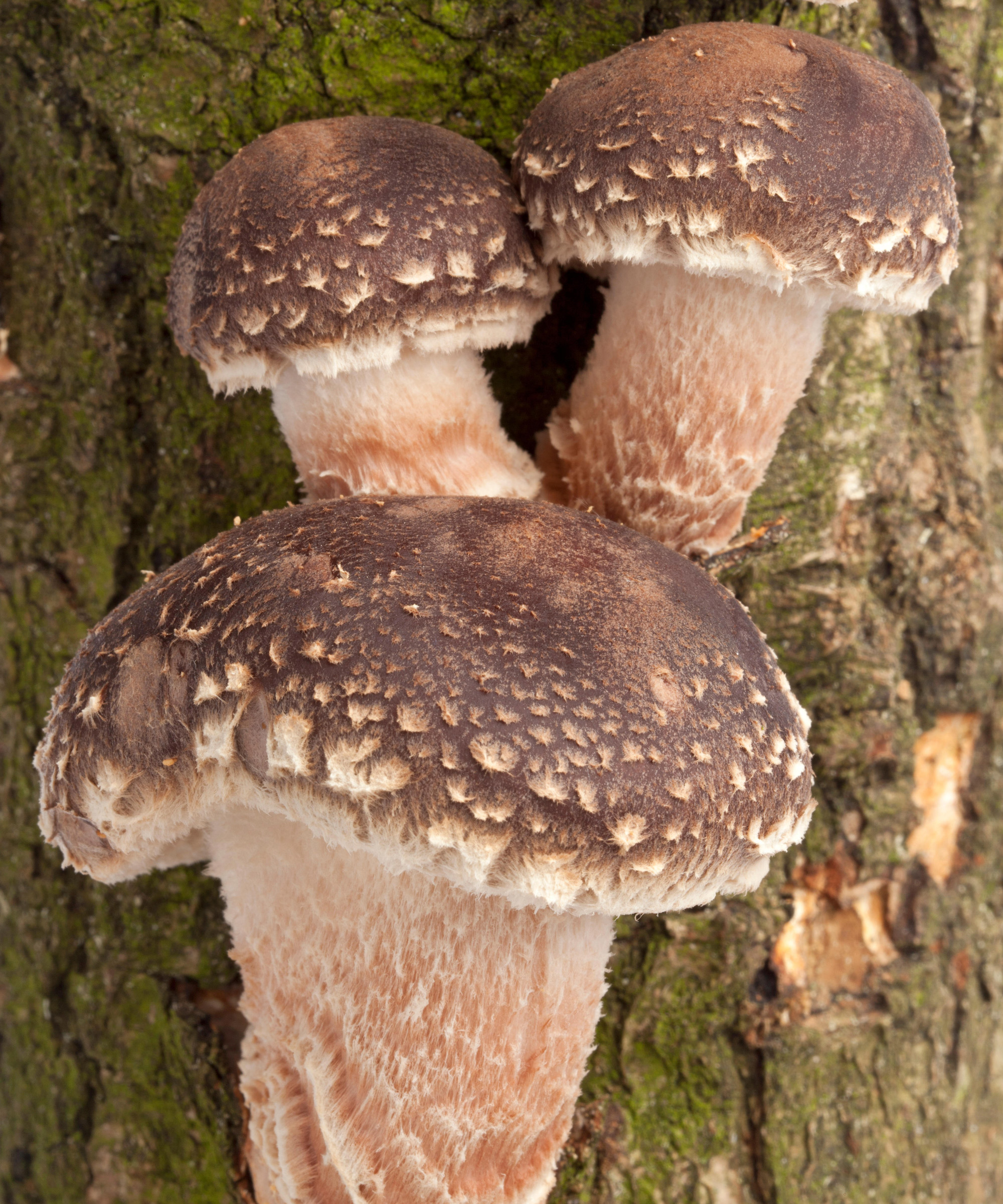
When should I harvest mushrooms?
Growth can be vigorous, but full maturity will vary, depending on the mushroom, levels of moisture and warmth. As Lucy points out, ‘Inoculated kits can yield in four weeks, while logs may take a few months to bear a harvest’. Oysters are particularly vigorous and can develop rapidly if exposed to the right (warm and humid) conditions; pink oysters can reach maturity in three to four weeks. Lion’s mane can also be developed in a matter of weeks if treated with care.
The material and process you use can also affect growing times. Growing chicken-in-the-woods on logs, for example, could take months. The amount of lignin (essentially food) in the wood can slow things down. Time of year may also impact growth, and while some mushrooms prefer cooler conditions, there are exceptions. Although the fall is traditionally the most successful time for growing mushrooms, you may find warmer months reap faster turnarounds for certain types as long as they are in shade and kept moist (for instance, pink oysters are tropical in origin). Bear all these factors in mind if you seek fast returns on your fleshy treats.
In terms of knowing when to harvest edible fungi, Chris Bonnett says it’s really a case of becoming familiar with what your particular variety looks like when fully grown. ‘Prepare mushrooms for harvesting after the caps have opened and separated from their stems,’ says Chris. ‘You can harvest them by simply plucking the caps with your fingers, or by using a sharp knife to cut them from the base of the stem.’
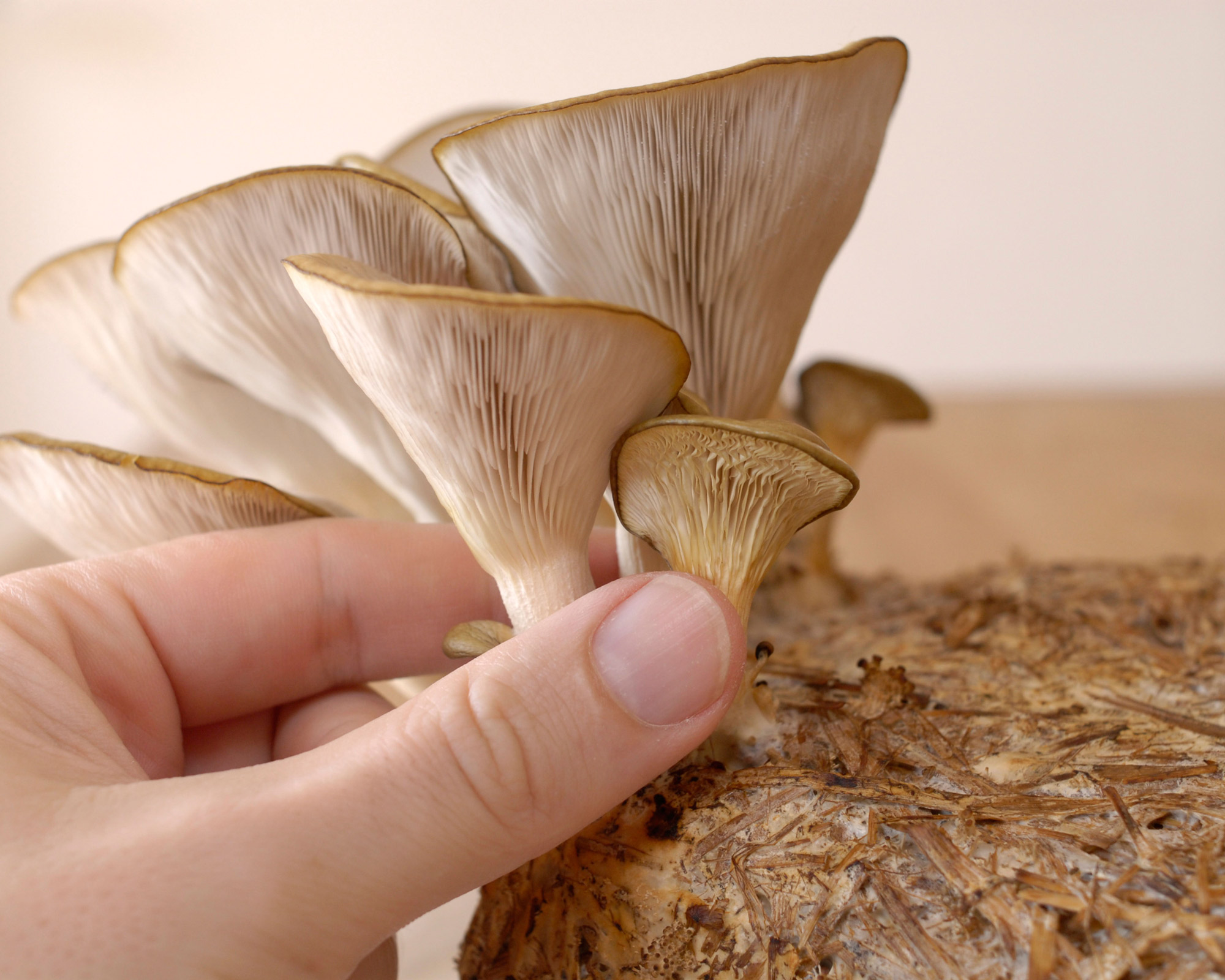
How many types of mushrooms are there?
According to the Mushroom Appreciation group, there are over 10,000 known types of mushrooms, with several wild mushroom resources quoting 14,000 different species. These include many that are toxic or psychoactive (mood-altering, in other words). However, in terms of edible mushroom varieties, there are far fewer (around 300) – although we have to say that’s still plenty to be getting your teeth into!
Edible fungi include sweet (black trumpet), frilly (cauliflower) and smoky (hedgehog), with fascinating names like slippery Jack, shaggy inkcap, parasol and puffball. In terms of the easiest vegetables to grow yourself, here a few of the most enjoyable, hardy and productive:
- Oyster mushrooms are flat and frilly, white, yellow, pink and blue. Varieties include king and pearl, and can be eaten raw or cooked. Oysters like all kinds of growing substrates including coffee grounds and books, with temperatures from 50-86˚F (10-30˚C).
- Shiitake mushrooms are a popular Asian staple and some of the easiest fungi to grow yourself. They have a buttery, earthy taste and a long shelf life, and are especially happy growing with logs.
- Lion’s Mane is an easygoing mushroom variety that fruits readily, even at room temperatures. It is often described as having a taste comparable to lobster, and is distinctive for its long and fluffy ‘gills’.
- Chicken of the Woods looks like something from another planet, but is one of the most fun and flavorsome fungi you can try. Perhaps unsurprisingly, it is said to taste like chicken.
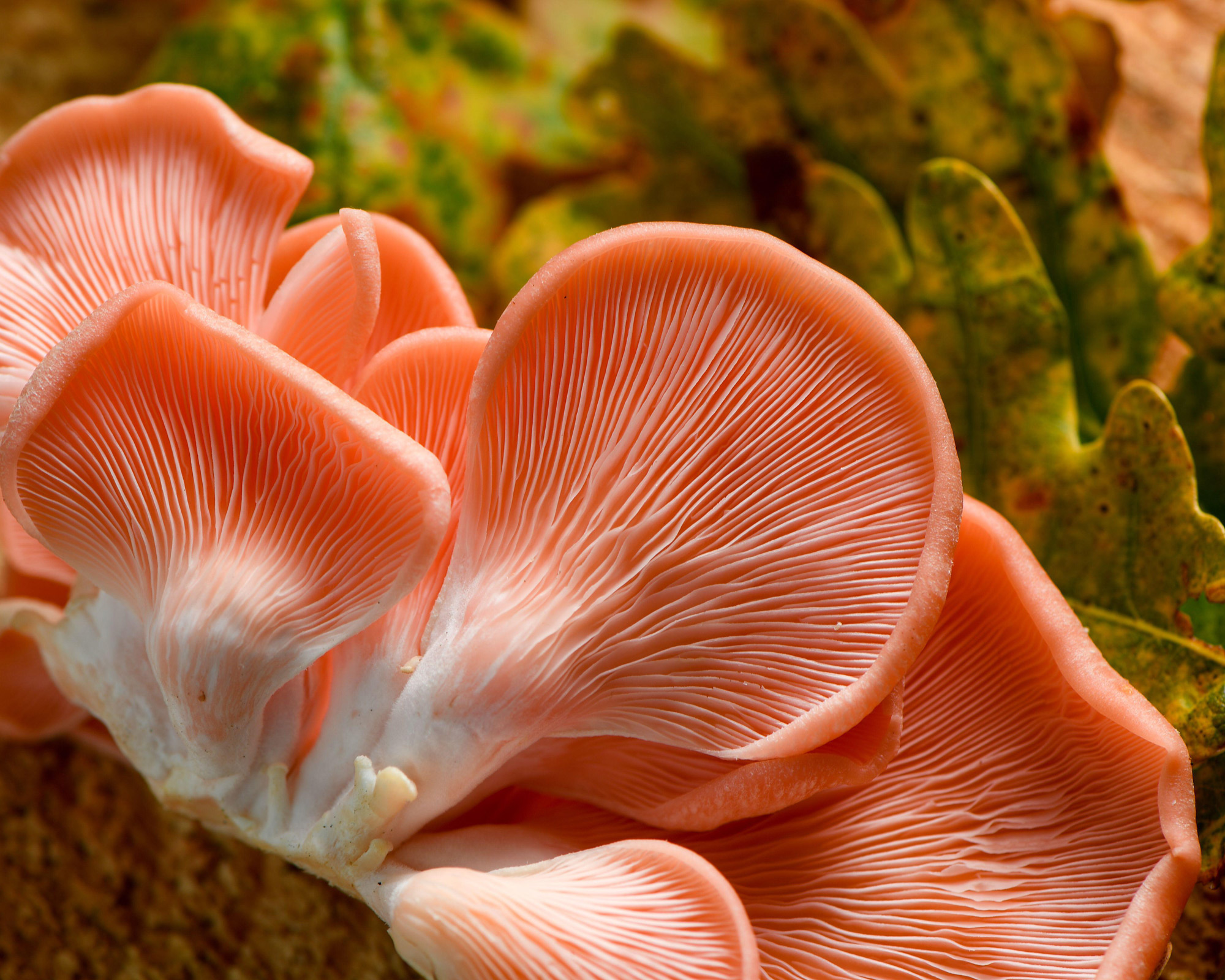
Which mushrooms are dangerous?
For any foragers seeking to advance their mushroom exploits with some wild mushroom picking, a word of caution is advised. While several fungi found in the wild (like shaggy inkcap and jelly ears) will be completely safe to nibble on, many are dangerous and can cause sickness, dizziness, or worse. Unless you are one hundred percent confident you have correctly identified your foraged fungi as safe, it is best to leave well enough alone. The Woodland Trust has rounded up those to be admired from a safe distance, and here are some of the most lethal:
- Fool’s Funnel: this pretty fungi, also known as the ‘sweating mushroom’, can cause blurred vision and abdominal pain.
- Panther Cap: it might look like the stuff of a Disney film, but if ingested it leads to convulsions, hallucinations and nervous disorders.
- Funeral Bell: a dainty bell-shaped fungi that contains deadly amatoxins and causes vomiting and liver damage.
- Death Cap: innocent in appearance, but this greenish fungi can result in seizures, kidney and liver failure, and is notoriously fatal.
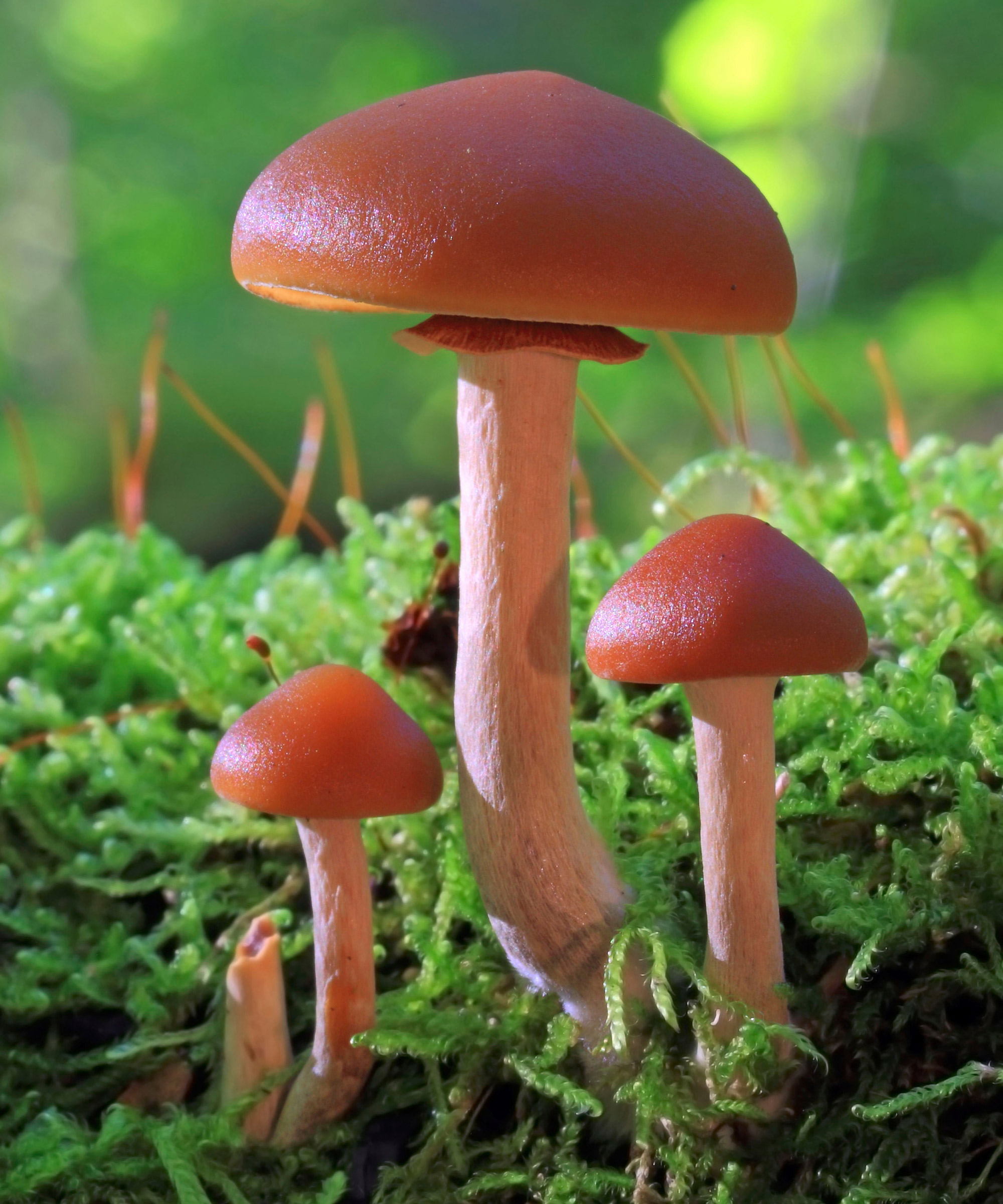
Where to buy mushrooms
If you want to know how to grow mushrooms in the most simple way, you can use spawn or specialist kits for oysters, shiitake and lion’s mane, amongst others. For those after substrates such as logs, straw or coffee grounds, these can all be found online through specialist suppliers such as Ann Miller’s mushroom store (see below). It is possible to recycle items like books to act as the substrate for your creations.
Give some thought to the type of mushroom you would like to grow, as this will determine the substrate and manner of production. Luckily, there’s a range of kits, spawn plugs, dowels and substrate materials available online, so use our quick links to start growing your own edible fungi.
Where to buy mushrooms in the US:
Where to buy mushrooms in the UK:
- Shop mushroom kits at Amazon
- Shop mushroom kits and plugs at Dobies
- Shop mushroom kits and plugs at Suttons
- Shop mushroom kits at Thompson & Morgan
- Shop mushroom kits at Ann Miller’s Speciality Mushrooms
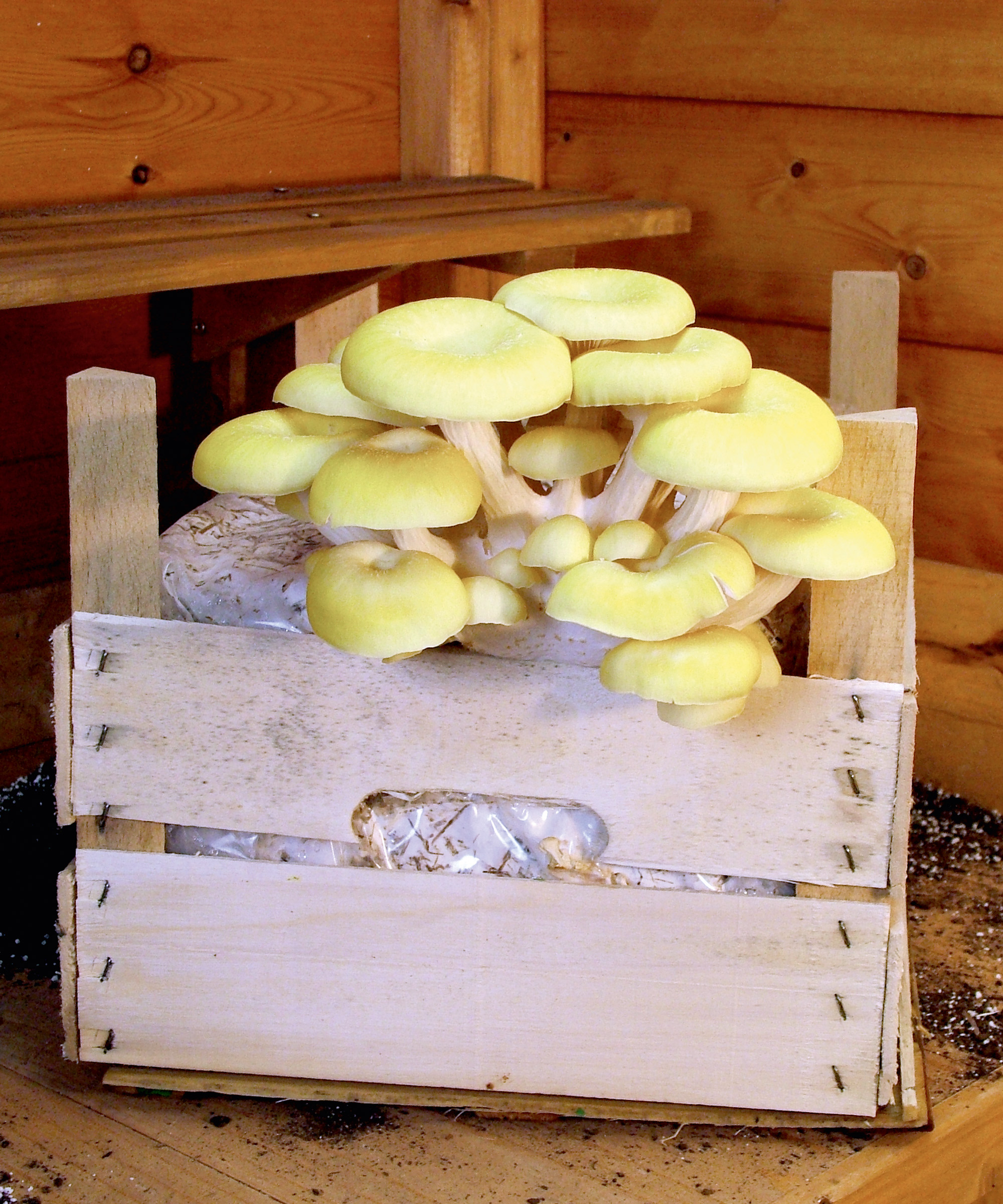

As assistant editor of Amateur Gardening magazine, Janey's gardening passion was fostered from an early age, when her amazing mum had her deadheading hydrangeas, mulching roses, and propagating strawberry plants from runners for school open days. She's also taken part in lots of conservation and rewilding projects for the RHS and TCV as a way of exploring her horticultural horizons.
